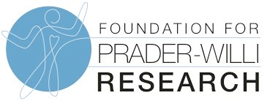![]() Although hyperphagia (excessive appetite) is a hallmark of PWS, it's one of the most difficult features to accurately measure and characterize. Currently, the main tools in this area are questionnaires about food behavior and food interest. These can be answered by caregivers, or by the person with PWS. Although tremendously valuable, these measures are subjective, meaning they're influenced by the perception and opinion of the person filling them out.
Although hyperphagia (excessive appetite) is a hallmark of PWS, it's one of the most difficult features to accurately measure and characterize. Currently, the main tools in this area are questionnaires about food behavior and food interest. These can be answered by caregivers, or by the person with PWS. Although tremendously valuable, these measures are subjective, meaning they're influenced by the perception and opinion of the person filling them out.
To complement the information from these questionnaires, researchers are also working to develop objective biomarkers of food interest and hyperphagia in PWS. An objective biomarker is a reproducible and accurate measure, indicator or proxy.
![]() Dr. Alexandra Key at Vanderbilt University is evaluating two noninvasive, low-cost measures of food-related interest. Her project is titled Developing Objective Biomarkers Of Hyperphagia In Children With PWS. Dr. Key's team will be using a technology called eye tracking to follow and quantify eye gaze while children with PWS observe picture displays. The displays include a variety of images, including some food items.
Dr. Alexandra Key at Vanderbilt University is evaluating two noninvasive, low-cost measures of food-related interest. Her project is titled Developing Objective Biomarkers Of Hyperphagia In Children With PWS. Dr. Key's team will be using a technology called eye tracking to follow and quantify eye gaze while children with PWS observe picture displays. The displays include a variety of images, including some food items.
The technique tracks eye movement to measure how frequently, and for how long s/he looks at each type of image in the display. Researchers can also monitor the brain's response to different types of images by measuring the electrical or evoked potentital. One of the benefits of these types of measurements is that they do not require any type of action or verbal response, so they can be used across ages and intellectual ability. The current pilot study is being conducted in children, but the technology could be used across all ages.
The goals of this pilot study are determine whether these approaches can be used as objective and quantifiable endpoints for clinical trials evaluating potential therapies.
Read more about the most recent round of PWS research projects funded by FPWR.








